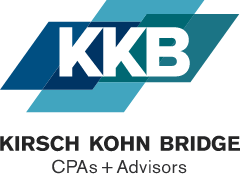SEP involves easy setup
If you don’t already have a qualified retirement plan, you can set up a SEP simply by using the IRS model SEP, Form 5305-SEP. By adopting and implementing this model SEP, which doesn’t have to be filed with the IRS, you’ll have satisfied the SEP requirements. This means that as the employer, you’ll get a current income tax deduction for contributions you make on behalf of your employees. Your employees won’t be taxed when the contributions are made but will be taxed later when distributions are made, usually at retirement. Depending on your needs, an individually-designed SEP — instead of the model SEP — may be appropriate for you.
When you set up a SEP for yourself and your employees, you’ll make deductible contributions to each employee’s IRA, called a SEP-IRA, which must be IRS-approved. The maximum amount of deductible contributions that you can make to an employee’s SEP-IRA, and that he or she can exclude from income, is the lesser of: 25% of compensation and $66,000 for 2023. The deduction for your contributions to employees’ SEP-IRAs isn’t limited by the deduction ceiling applicable to an individual’s own contribution to a regular IRA. Your employees control their individual IRAs and IRA investments, the earnings on which are tax-free.
There are other requirements you’ll have to meet to be eligible to set up a SEP. Essentially, all regular employees must elect to participate in the program, and contributions can’t discriminate in favor of the highly compensated employees. But these requirements are minor compared to the bookkeeping and other administrative burdens connected with traditional qualified pension and profit-sharing plans.
The detailed records that traditional plans must maintain to comply with the complex nondiscrimination regulations aren’t required for SEPs. And employers aren’t required to file annual reports with IRS, which, for a pension plan, could require the services of an actuary. The required recordkeeping can be done by a trustee of the SEP-IRAs — usually a bank or mutual fund.
SIMPLE Plans
Another option for a business with 100 or fewer employees is a “savings incentive match plan for employees” (SIMPLE). Under these plans, a “SIMPLE IRA” is established for each eligible employee, with the employer making matching contributions based on contributions elected by participating employees under a qualified salary reduction arrangement. The SIMPLE plan is also subject to much less stringent requirements than traditional qualified retirement plans. Or, an employer can adopt a “simple” 401(k) plan, with similar features to a SIMPLE plan, and automatic passage of the otherwise complex nondiscrimination test for 401(k) plans.
For 2023, SIMPLE deferrals are up to $15,500 plus an additional $3,500 catch-up contributions for employees ages 50 and older.
Contact us for more information or to discuss any other aspect of your retirement planning.
© 2023
For more helpful tax and accounting articles, or to sign up for our newsletter, please visit our KKB Insights page. If you have any questions, please contact us.




Update on retirement account required minimum distributions
/in Tax/by KKB CPAsThe SECURE 2.0 law includes good news about required minimum distributions from tax-favored retirement accounts. But an earlier law contained some bad news for certain beneficiaries of inherited retirement accounts. Here are the rules. Continue Reading Update on retirement account required minimum distributions
The tax deadline is almost here: File for an extension if you’re not ready
/in Tax/by KKB CPAsThe April 15 tax deadline is approaching, but what if you’re not ready to file? There are some simple steps you can take to avoid steep penalties. Continue Reading The tax deadline is almost here: File for an extension if you’re not ready
Coordinating Sec. 179 tax deductions with bonus depreciation
/in Tax/by KKB CPAsThere’s more than one way for businesses to claim depreciation tax deductions. By combining them, you can get optimal tax-saving results. Continue Reading Coordinating Sec. 179 tax deductions with bonus depreciation